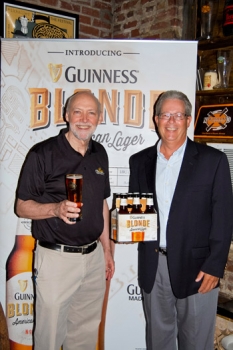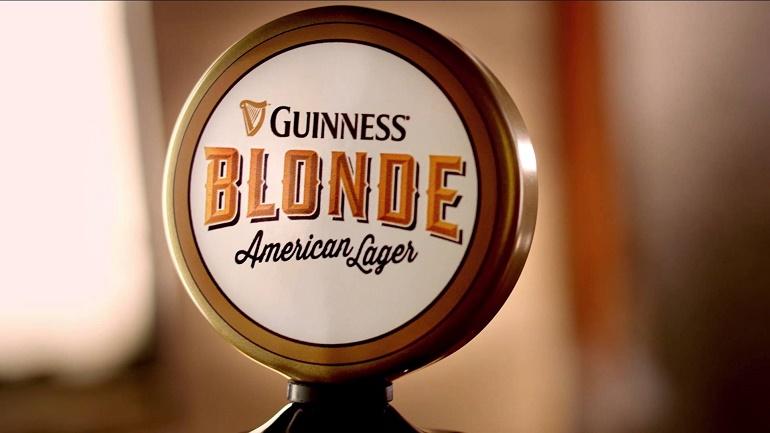Start 14-Day Trial Subscription
*No credit card required

Guinness Goes Blonde
In a marked departure from its traditional dark stout, the Guinness brand is introducing Guinness Blonde in September. Made with the 125-year-old Guinness yeast, the taste, structure and appearance of the lager underscore a major effort by the long established brand born in Ireland to expand its horizons.
 To be sold in the U.S. and brewed in Latrobe, Pennsylvania, Guinness Blonde has a burnished gold appearance, a floral aroma from American hops and a complex flavor profile. While ales, porters and stouts have enjoyed an increasingly larger market share in the past two decades thanks to the craft beer movement, the choice of a lager by Guinness reflects the lager style’s ongoing dominance in the American market.
To be sold in the U.S. and brewed in Latrobe, Pennsylvania, Guinness Blonde has a burnished gold appearance, a floral aroma from American hops and a complex flavor profile. While ales, porters and stouts have enjoyed an increasingly larger market share in the past two decades thanks to the craft beer movement, the choice of a lager by Guinness reflects the lager style’s ongoing dominance in the American market.
The idea was to create a “fusion beer,” using American techniques combined with the Guinness yeast. Because of the use of an ale yeast to brew a lager, it’s difficult to categorize the Guinness Blonde in a traditional style. “Brewers are not concerned with style choices as much as brewing the beer itself,” said Doug Campbell, the brand manager for Guinness. Campbell said the fusion process is more about creating an American lager unlike anything else in the marketplace.
Guinness Blonde “brings the taste, color and character of great American beers and fuses them with the heritage and artistry of the Guinness tradition begun in 1759 by Arthur Guinness,” he said.
Jonathan Ingram with Guinness Brewmaster Joe Gruss
Joe Gruss, a second generation brewer who spent a decade as the brewmaster at Latrobe Brewing Company and has 35 years of experience, developed Guinness Blonde lager in Latrobe for Guinness. At a tasting dinner to introduce the beer held in Atlanta, Gruss said most of his time was spent on integrating American brewing knowledge with the Guinness yeast while consulting with counterparts in Dublin by telephone.
“The results weren’t good at first with the ale yeast when it came to lagering the beer at cool temperatures,” he said. “But then we brought the temperature up to 18 degrees Celsius, a little higher than what it would normally be, and that worked.”
In addition to a hoppier nose than many lagers, a rich biscuit malt flavor is followed by the citrusy notes from Willamette, Mosaic and Mt. Hood hops, and then a dry finish. “The hop taste doesn’t stay in your throat,” said Gruss. “The beer finishes dry.” Gruss added that the key decision with the hopping was adding the Mt. Hood variety. “They don’t add much bittering, but they help balance out the taste. I’ve worked for many years with the Mt. Hood hops, so I knew what they could do.”
The fusion of a lager with a more hoppy – and a little spicy – approach means the Guinness Blonde definitely pushes the envelope. It may not be the only beer made by combining the lagering process with ale yeast – the Kolsch style would be another example – but the rich backbone of Crystal malt in the Guinness Blonde sample served at the dinner brings a distinctive character to this method in addition to the American hops. Combined with the specially imported Guinness yeast, the “fusion” designation comes off as more than a labeling exercise.
The Blonde is the first in a series of the Guinness Discovery Series, which will introduce a new beer twice a year. While the others may be more seasonally oriented, the Guinness Blonde will continue as a year-round beer and effectively is the flagship of the new diversification effort by the brand, which is owned by Diageo.
Clockwise from the left:: Jaclyn Sisbarro, Osayi Endolyn, friend of Mr. Adeimy, Will Adeimy, Jim Sias , Bob Townsend, Joe Gruss (Guinness Brewmaster), Doug Campbell, Jonathan Ingram and Lisa Silfies.



